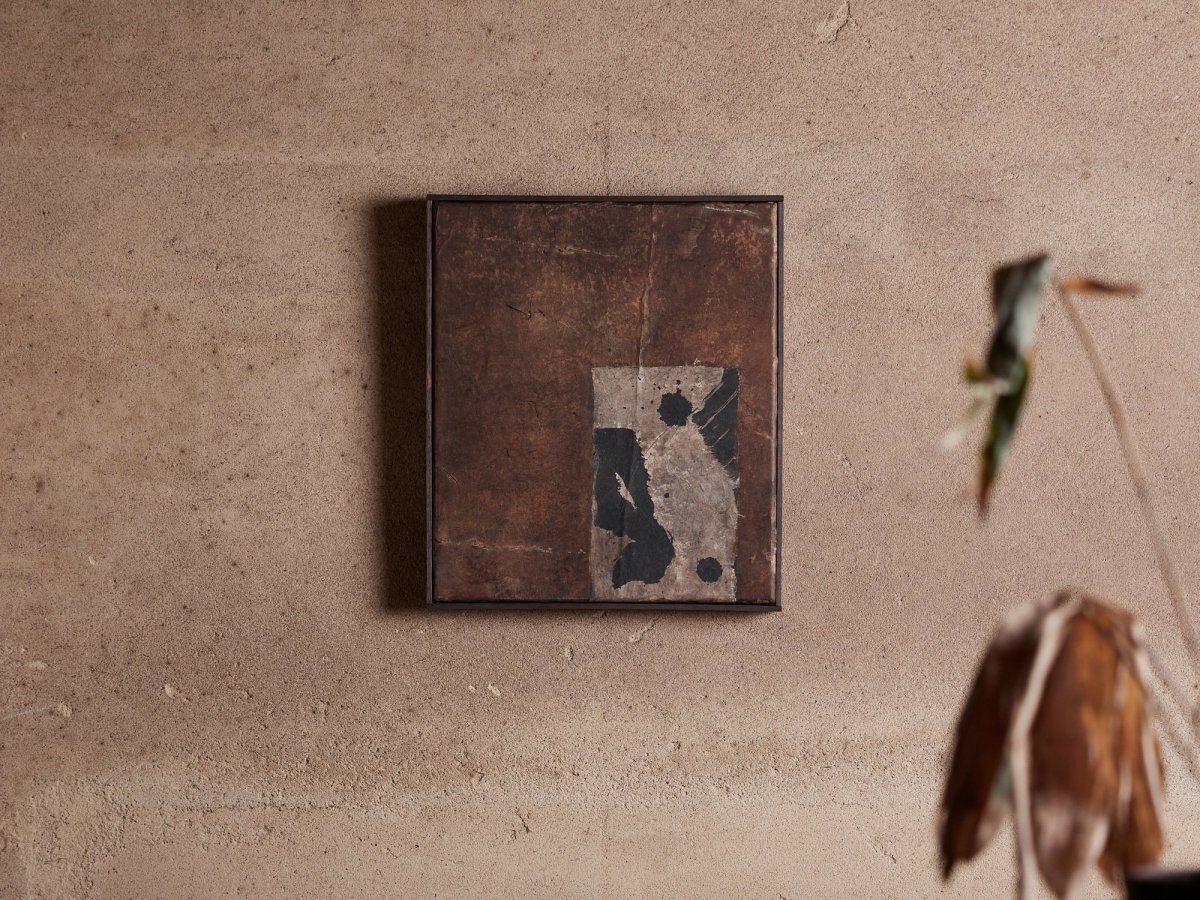- Shane V. Charles
- Posts
- Issue No. 53
Issue No. 53

ISSUE NO. 53
A September Issue

Photography by Piet-Albert Goethals
Every act of creation is, in some way, an act of repair. To paint, to write, to shape material into form is to take what exists—whether memory, matter, or fleeting emotion—and return it transformed. The artist does not leave things untouched; we alter them, nudge them forward, offer a glimpse of what could be. In this way, the canvas becomes a testament to care, to the possibility that even the smallest gestures can shift how the world is seen.
ARCHITECTURALLY CURIOUS
Into The Earth

Photography by Tom Ross
There’s a moment, stepping inside, where the house feels less built than unearthed. Concrete folds itself against the raw rock, the terrain refusing to be hidden and instead becoming part of the architecture. A fireplace hovers above the stone, as though balanced between human intention and geological permanence. Even the stairwell feels more like a passage carved from earth than a constructed element. The restraint in furnishing leaves the dialogue between rock and concrete undisturbed, allowing material itself to speak.

Photography by Tom Ross
Hovering Above the Slope
From the ridge, the house extends outward as if testing the edge of flight—glass and concrete reaching past the hillside into open air. Living spaces align with the horizon, pulling the sea into daily life while remaining tethered to the slope. Roof gardens thicken with native plantings, allowing the structure to dissolve back into its setting rather than stand apart from it. It is a study in tension: exposed yet hidden, fortified yet dissolving.

Photography by Tom Ross
The Intimacy of Concrete
Here, in the bathroom, the rawness of concrete is tempered by the warmth of brass and the stillness of stone. Light filters through an upper slit, washing across the walls and catching the grain of formwork left behind—marks of making turned into ornament. A stone basin and wooden cabinetry anchor the space, creating balance between permanence and touch. The atmosphere is both austere and tender, proof that intimacy can emerge from material often thought of as cold.
GLOBAL GLIMPSE
Marble Pulse

Photography by Jacqui Turk
The kitchen sets the tone for the home’s revival, where history meets a sense of daring modernity. Twisted rope moulding frames the cabinetry, a subtle translation of the home’s original brass door pull. Across the surfaces, richly veined Rosso Lepanto stone steals the gaze, its deep reds and pinks coursing like veins of the earth through the room. The material feels unapologetic, its permanence anchoring the space in heritage while its boldness propels it into the present.

Photography by Jacqui Turk
Echoes in Green
The bathroom continues this dialogue, holding onto its original stepped detailing and dado line as though they were clues from another era. Rather than erasing them, the design leans in—coating the space in sage-green tiles that ripple with light and texture. The pedestal basin, a sculptural echo of Art Deco form, stands in quiet conversation with herringbone mosaic floors underfoot. Each element is precise, yet together they hum with a softness, a rhythm of care that feels both restorative and enduring.

Photography by Jacqui Turk
Threaded Continuity
Together, these rooms reveal a philosophy of design rooted not in nostalgia, but in reinterpretation. Every detail, from rope moulding to mosaic tile, is treated less as ornament and more as narrative—threads of the past rewoven for today’s life.
What emerges is not a clash between eras but a layered harmony, where heritage is neither erased nor frozen in time. Instead, it is made tactile again, inviting those who inhabit the home to feel history under their hands, in the patterns of stone, the cadence of tile, and the weight of craft.
VISUAL COMFORT
Echoes in Material

Artist: Alexandra Yan Wong
The first piece draws attention not through color but through its surface, where stains, scratches, and paper fragments have been absorbed into a restrained palette. What makes it unique is the artist’s refusal to treat paint as the sole medium—fabric, wood, and aged textures all become part of the work, blurring the line between object and memory. Instead of presenting a clear image, she invites the viewer into a layered process, one where traces of the hand and the passage of time are equally important. The result feels both fragile and grounded, as if the canvas carries the residue of lived experience.

Artist: Alexandra Yan Wong
Silence as Form
Moving down the corridor, the second painting continues this language of restraint but in a way that feels almost architectural. Blocks of black float across muted grey, their arrangement reminiscent of calligraphy, yet pared back into abstraction. What’s striking here is the artist’s balance between repetition and gesture—each mark disciplined, but never mechanical.
It reveals her unique method of transforming perception into form: capturing the quiet tension between order and improvisation, past and present. The work doesn’t demand attention; it rewards patience, offering a stillness that feels rare in the visual noise of today.
MUSICAL INTERLUDE
What I'm Listening to in September
Leaving things better than we found them isn’t always grand—it can be a subtle mark, a layered texture, a fragment made whole. Creation is less about perfection and more about renewal, adding threads of meaning to what might otherwise remain unseen. Each gesture matters, reminding us the world can always be returned, however slightly, in better shape.
For those who preordered Interior Identity: African Diaspora, we’ll be sharing a shipping update by the end of September. I can’t wait to get this work into your hands.
I’ll see you next week, my friend.
Warmly,
/shane
